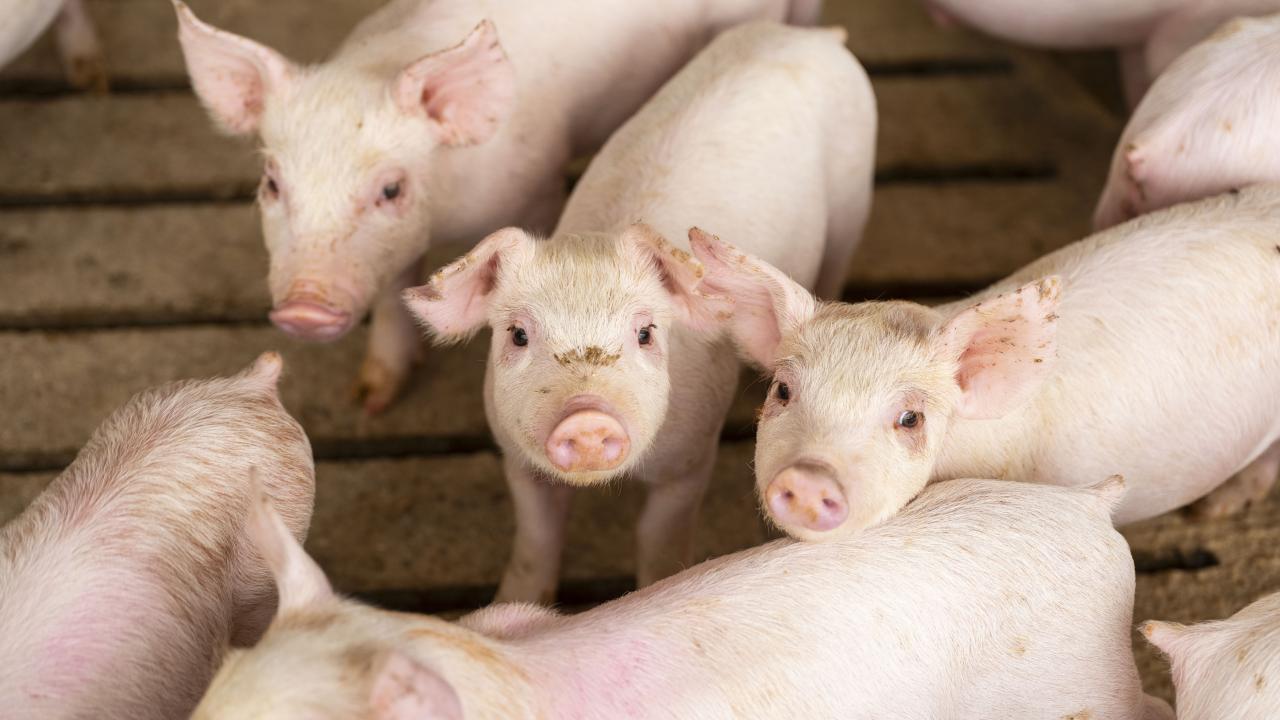
What CRISPR can do for agriculture and livestock production
Those in agriculture know to survive, you must adapt and innovate. One way to do this is by embracing technology. Among the most promising—and sometimes most debated—tools is gene editing; a technology that’s transforming the way we grow food and care for animals.
Unlike traditional genetic modification, gene editing is a more precise and targeted method that allows scientists to make small, intentional changes to an organism’s DNA. The goal isn’t to add foreign genes, but to edit existing ones—to remove disease susceptibility or improve resilience. Think of it as a digital scalpel with precise accuracy.
Recently, scientists have turned their focus to CRISPR gene-editing technology as a promising method for introducing valuable traits into crops. Experts believe CRISPR could help boost food production, enhance quality, and support environmental sustainability—an increasingly critical goal as the global population rises and climate change limits available land and water for agriculture.
To illustrate how CRISPR enables precise changes to DNA, Dawn Cayabyab, a Ph.D. student in the Department of Animal Science at UC Davis, offered this explanation:
“CRISPR/Cas9 is a gene editing tool that we can think of as molecular scissors and we can take those scissors and guide them to a location in the genome and make a precise cut in the DNA,” Cayabyab explained. “The cell has these natural defense mechanisms to try and repair that DNA and we can take advantage of that mechanism to introduce our desired genetic alterations such as disabling a gene or inserting new DNA or correcting mutations.”
She added that, “CRISPR/Cas9 is a very powerful tool for biomedical and agricultural applications –in livestock specifically it can be used to enhance disease resistance or production traits and also address animal welfare.”
For livestock, gene editing holds enormous potential. Researchers are exploring how to use the technology to make pigs resistant to devastating diseases like PRRS (porcine reproductive and respiratory syndrome virus) or to improve animal welfare by eliminating the need for certain procedures, such as castration, particularly in the case of boar taint. In dairy cattle, gene editing is being studied as a tool to help animals better withstand heat stress, an increasingly important trait as global temperatures rise.
On the crop side, gene editing could help farmers grow plants that use water more efficiently, resist pests naturally, or stay nutritious longer after harvest—all while reducing the need for chemical inputs.
The technology isn’t without its challenges. Public perception and global market acceptance both play a role in how fast and how widely gene-edited products can be adopted. But scientists believe it can be a key part of a sustainable, productive agricultural future.
CRISPR has many potential uses in agriculture. CRISPR and gene editing offers powerful new tools for agriculture, allowing scientists to make precise changes to the DNA of crops and livestock. It can be used to develop disease-resistant plants, improve drought tolerance, and boost crop yields without introducing foreign DNA. In livestock, CRISPR can help enhance animal welfare, increase productivity, and reduce the environmental impact of farming. The technology holds promise for creating a more sustainable and resilient food system.
Here are a few examples:
For Plants:
Disease Resistance
- CRISPR can create crops that are resistant to viruses, fungi, and bacteria, reducing the need for chemical pesticides.
Improved Yield and Quality
- Editing genes that control growth and reproduction can increase crop productivity and enhance nutritional content.
Drought and Climate Resilience
- Gene editing can improve a plant’s ability to withstand extreme weather conditions like drought, heat, and salinity.
Reduced Environmental Impact
- With less reliance on pesticides and fertilizers, gene-edited crops can support more sustainable farming practices.
Disease Resistance
- Like with PRRS in pigs, gene editing can help create animals that are resistant to infectious diseases, reducing losses and the need for antibiotics.
Improved Animal Welfare
- Gene editing can eliminate traits that cause pain or discomfort (e.g., horn development in cattle), reducing the need for physical procedures.
Greater Efficiency
- Traits like faster growth, improved feed conversion, or higher reproductive success can be enhanced, helping farmers produce more with fewer resources.
Sustainability
- Healthier, more efficient animals and crops contribute to a more sustainable and climate-friendly food system.
Researching CRISPR
Dr. Elizabeth Maga who is an associate professor in the Department of Animal Science, recently received a federal grant to work with CRISPR to advance the use of gene-edited animals for human consumption.
“Gene editing in the most simplest of terms is a biotechnology that we can use to go into an exact location in the genome and so the goal in the gene editing then is to go into a gene of interest if we want to eliminate that gene from being functional on the animal, we can break the DNA at a desired spot in that gene repairs itself,” Dr. Maga said. “And then hopefully that repair makes the gene nonfunctional and so then that trait basically is removed from the animal.”
Over thousands of years, humans have changed crops and food animals through a process called selective breeding. Selective breeding makes crops have more of the traits we want, and less of the traits we don’t want. CRISPR is a quick way to edit the genes of crops and animals to give them gene variants for the traits we want and change gene variants to get rid of traits we don’t want. CRISPR gene editing might be used to defend against pests, or make crops or animals grow bigger, faster and healthier.
“We’re being closer to being able to use these animals to address issues in agriculture production such as welfare issues, productivity issues, environmental impact of animals.” Dr. Maga said. “So, it’s one of the tools in the in the toolbox farmers can use to improve their animals to better supply food to a growing human population. So this includes cattle, pigs, sheep and goats mainly.”
While gene editing can improve animal health and reduce the need for antibiotics, some consumers still have questions about whether meat from gene-edited animals is safe to eat. Gene-edited meats undergo rigorous scientific review to ensure they are just as safe and nutritious as conventionally raised products. Because gene editing makes precise, targeted changes without adding foreign DNA, it offers a reliable and well-regulated approach to improving animal health and food production
Cayabyab emphasized that before gene-edited meats reach the market, they must pass multiple layers of regulatory oversight to confirm their safety for animals, humans, and the environment
“There are many regulatory steps and processes in place to ensure the gene edited food product is safe before it hits your plate,” Cayabyab said.
It is thorough testing and regulatory review that ensure gene-edited meats adhere to the same high safety standards as any other food on the market
Dr. Trish Berger, a distinguished professor in the Department of Animal Science at UC Davis stresses the advantages and safety of using a tool such as CRISPR.
“In the case of eliminating a segment of DNA (with CRISPR) we’re not making a new protein product so there’s nothing to worry about in terms of consuming some foreign protein,” Dr. Berger said. “I would be very comfortable feeding gene edited pork to grandchildren. And that, to me, would be the most precious consumer that I would know about, and so I'd be very comfortable.”
Dr. Berger went on to say, “We are making pigs healthier and more resistant to disease an improved animal welfare we are not making frankenpig we are talking about pigs that are very healthy, normal physiological functions and it’s incredible and exciting!”
Key Points and Q&A
What is CRISPR?
CRISPR is a tool that scientists use to make very precise edits to DNA.
Think of it like a pair of molecular scissors that can snip a specific part of a gene—allowing scientists to turn a gene off, fix it, or adjust how it works.
How is gene editing used in farming?
Gene editing helps farmers raise stronger, healthier crops and animals.
For example, it can:
- Make pigs more resistant to disease
- Help cows handle heat better
- Create crops that use less water or resist pests naturally
How does gene editing help reduce the use of antibiotics?
By making animals more resistant to common diseases, they stay healthier without needing as many antibiotics.
That’s good for the animals—and for responsible antibiotic use.
Can gene editing help with climate change?
Yes. Gene-edited plants and animals can be more efficient and resilient in extreme weather.
Examples include:
- Cows that handle heat stress better
- Crops that grow in drought conditions
Is gene editing only used on animals in agriculture?
No—gene editing is used in both livestock and crops.
In plants, it can help improve shelf life, nutrition, disease resistance, or reduce the need for pesticides. In animals, it’s often about health, welfare, and sustainability.
Are there environmental benefits to gene editing?
Yes. Healthier animals and stronger crops mean fewer resources are needed to produce food.
That means less land, less water, and lower emissions—making gene editing one tool for more sustainable agriculture.
The CLEAR Center receives support from the Pork Checkoff, through the National Pork Board.
